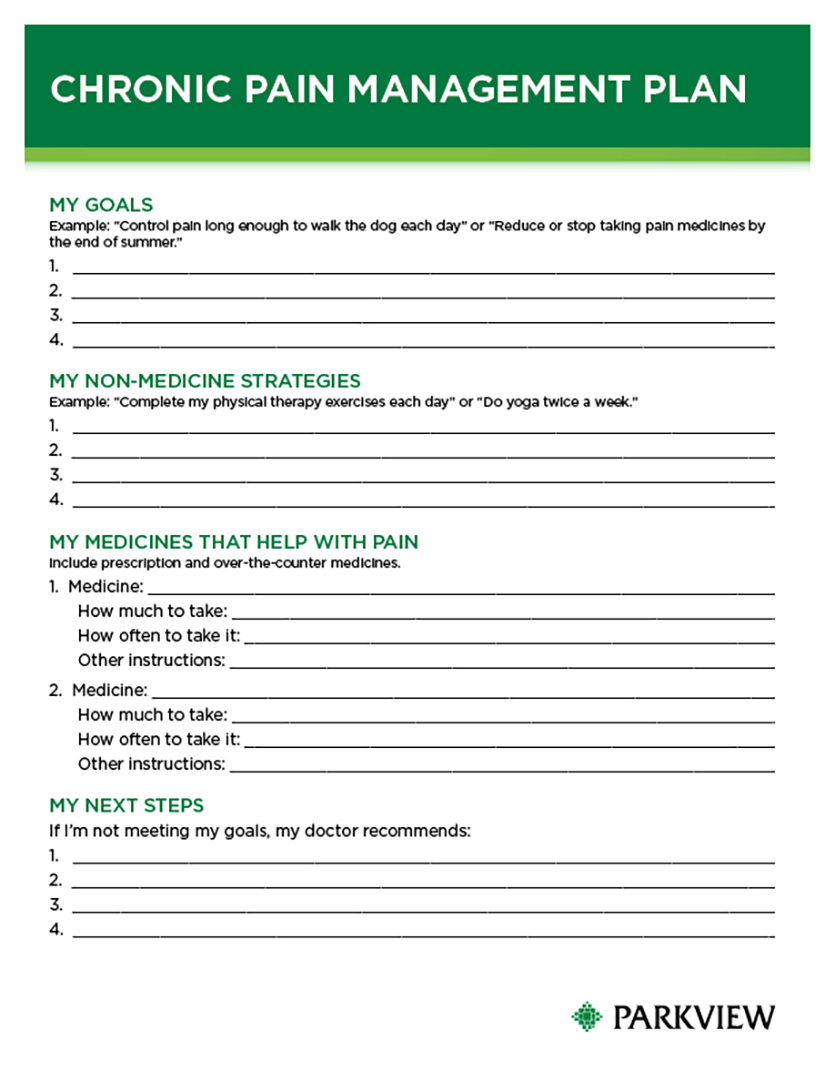
Whether you’re dealing with pain after an injury or surgery or living with chronic pain, you’ll likely find yourself in need of a pain management plan. A pain management plan is something you create together with your doctor to help you manage your pain at home and get back to living your life. It can include medications, physical therapy and other treatments. Let’s take a closer look at what a pain management plan could entail and how to get started making one with your provider.
What is a pain management plan?
A pain management plan spells out ways you can deal with your pain at home. You and your care team will create this plan before you leave the hospital. The plan may include:
- The goals of your treatment. This may include how you can expect your pain and function to improve.
- The treatments your doctor suggests for your pain. These may include medicines, physical therapy or relaxation exercises.
- Notes about how you and your care team will work together as you recover. Your team may include your doctor, a physical therapist and an occupational therapist.
- A review of your treatment goals for pain and function.
Your feelings about how you want to manage your pain are important. Be open and honest when you talk with your doctor. This will help ensure that you get a plan that is safe and that works best for you.
How do you make a pain management plan?
It's important to let your doctor know how your pain is affecting your life. The goal of a pain management plan isn't to totally get rid of pain, but rather to control the pain enough so that daily activities are easier.
You and your doctor will work together to create your plan. It might include more than one type of pain control. For example, you may take prescription or over-the-counter drugs and use physical treatments like massage, and acupuncture. Mental exercises can help too, such as meditation or a type of counseling to change how you think about your pain.
If your pain isn't controlled well enough, talk with your doctor. You may need to make a new plan, or your doctor may refer you to a specialist.
Following your treatment plan for managing pain
The best way to control your pain is to follow your treatment plan and give it time to work. Some treatments may take a few days or weeks to improve your pain. You and your doctor can talk about how long you should keep using a medicine or other treatment.
If medication is a part of your treatment plan, you can make the most of your pain medicines by following these rules:
- Take them on time (by the clock).
- Don't skip a dose or wait until you think you need it.
- Be prepared for breakthrough pain.
You may find that taking your medicine works most of the time but that your pain flares up during extra activity or even for no clear reason. These flare-ups are called breakthrough pain. Your doctor can give you a prescription for fast-acting medicines that you can take for breakthrough pain.
Sample chronic pain management plan
Here is an example of a pain management plan. You can work with your doctor to complete it.

Get a printable version of the pain management plan here.
The experts at PPG – Pain Management treat a variety of complex, chronic pain needs using the latest treatments, therapies and interventions. Appointments with PPG – Pain Management providers are by referral only. If you suspect you need to see a pain management provider, contact your primary care physician today.
Copyrighted material adapted with permission from Healthwise, Incorporated. This information does not replace the advice of a doctor.



